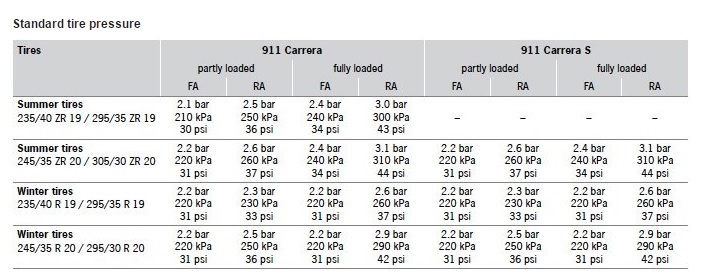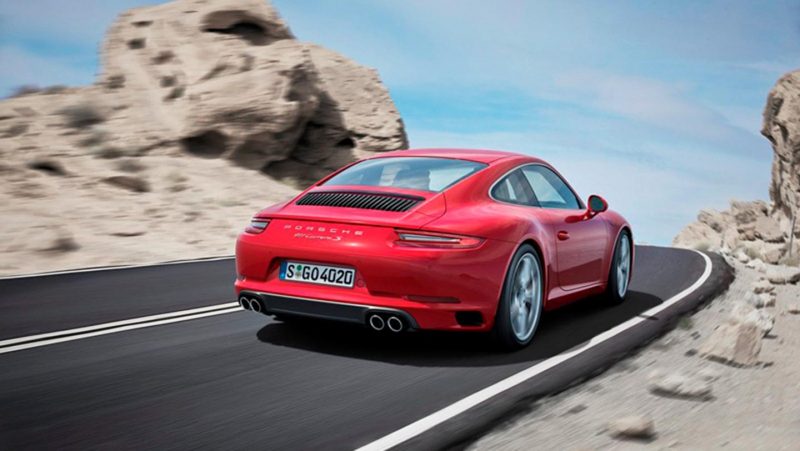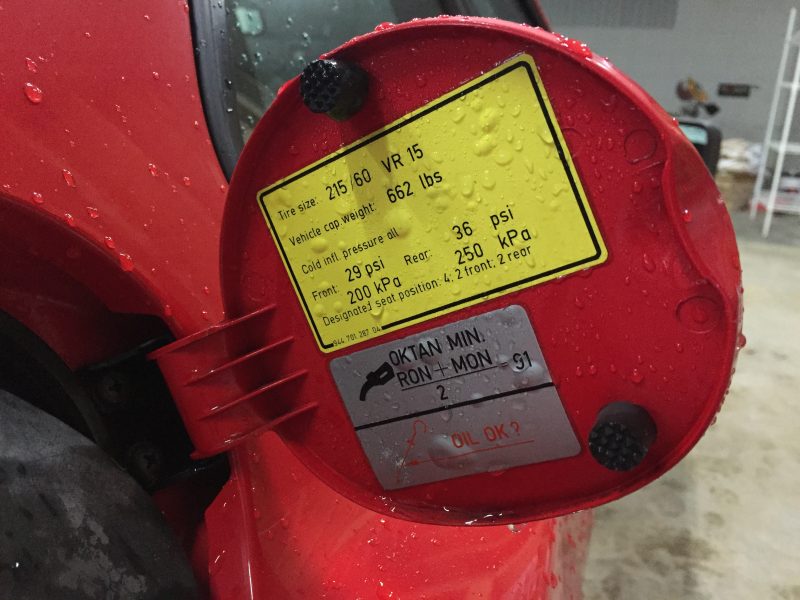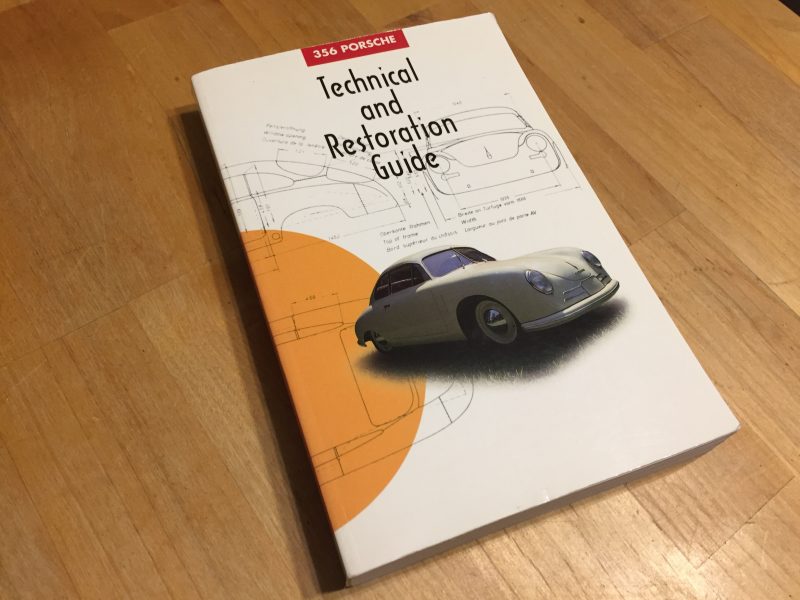For those of us who drive on the street, tire pressure probably doesn’t get a lot of consideration. Porsche includes recommendations in the manual, and frankly, why not use them? Of course, when driving deviates from the daily grind, tire pressures become a lot more important. Whether using your Porsche for a track day, autocross, or road rally, more extreme situations than normal may require deviations from “normal” tire pressures.
The video above from Engineering Explained does a good job covering the fundamentals of tire pressure and performance in the dry and in the wet. The video also covers important points such as how temperature affects tire pressure, and how tire pressure can affect tire wear.

The Modern 911 Perspective
The chart above is from the owner’s manual for 2017 911 Carrera 2 models. Let’s dive in to this chart a little. The 911 is rear engine and runs a staggered wheel and tire setup, and this drives the tire pressure specification. The high percentage of mass over the rear axle requires greater tire pressure than the fronts for two primary reasons. The first is to carry the load of the rear-mounted engine, and the second is to mitigate the oversteer inherent in the layout.

Lowering rear tire pressure would increase oversteer, and increasing it further would increase understeer. The opposite tire pressure to understeer/oversteer relationship holds true for the front of the car. In a modern 911, the wheel and tire setup is entirely designed around bringing oversteer in line. In addition to the tire pressure differential, the 911 runs a much wider tire at the rear than at the front (this is true in both RWD and AWD models).

In my case, this is no longer relevant because I am not running stock sized wheels.
Tire Inflation and Older Porsche Models
Porsche specifies a cold tire inflation number for all models. Into the 1990s, this information was generally on a little yellow tag under the fuel filler door, though it is also in your owner’s manual. These tire pressures are designed to tame the cars’ handling somewhat. In a stock, naturally aspirated 944 with the same size tire at all four corners, this was done by reducing the tire pressure slightly at the front end. Tire Rack has a helpful chart which helps to illustrate how several suspension setup changes, including tire pressure, can affect vehicle handling.
Unlike a 911, a 944’s mass is nearly balanced from front to rear. With equal sized tires at both ends, simply dropping tire pressures at the front will induce some understeer. While this will make the car more docile for inexperienced drivers, it is also easy to counteract simply by raising tire pressures on the front axle. To get the same net effect in a 911 requires both a differential in tire pressure and width. This is part of the reason early 911s have a much more well deserved reputation for tricky handling than later cars. Very early 911s use the same width tires front and rear. As time went on, the rear tires became much wider relative to the fronts, while weight distribution remained approximately the same.

The Classical Perspective
Fortunately, these truths are pretty much universal. If you look back in the 356 Registry magazine archives (which I have a portion of in their Technical and Restoration Guide), you’ll see the same tire pressure advice. In reference to setting a 356 up for autocross, in Volume 8, Issue No. 3, Bob Napier writes:
“… with this setup I usually run 36PSI in the front and 34(PSI) in the rear. The higher front pressure partially offsets the low speed understeer tendency, and, on a real tight course, I might drop to 33 or 32 in the rear in an attempt to get the rear to come around.”
So whether your Porsche is new or old, monitor your tire pressure for optimal handling!
Resources on Tire Pressure and Setup for your Porsche:
- Michelin on High Performance Driving
- Turn Fast on Tire Pressures
- Tire Rack Guide to tire pressures for competition.
- Tire Rack Guide to tire pressures for winter driving.
- Turnology with Kenny Brown on Tire Setup
- Engineering Explained on Tire Pressure
- Engineering Explained on Tire Load Sensitivity(IE Width vs Grip)
